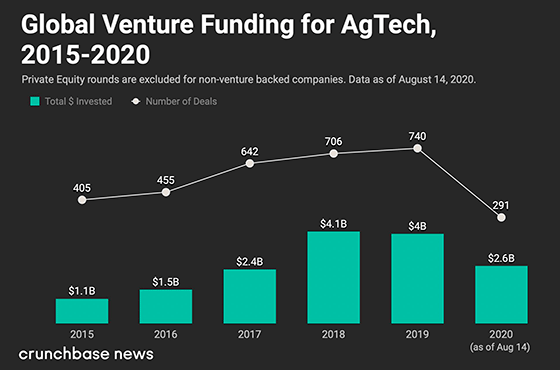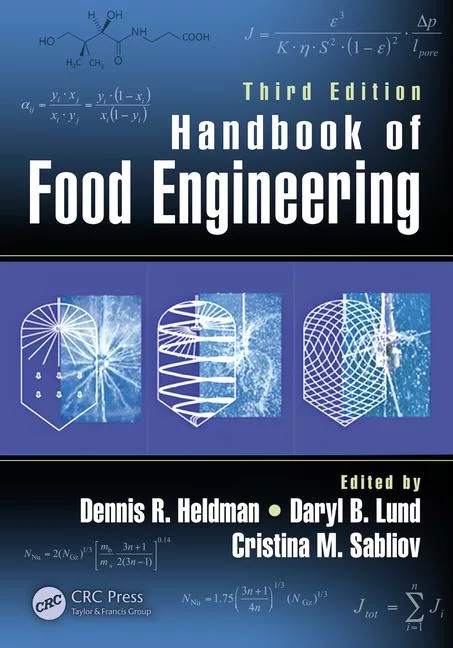Automated Agriculture
Future of food: People, planet and economy
To keep up with the growing world population, agriculture will adopt automation

Indoor vertical farming is gaining interest due to its ability to thrive in limited space. Source: U+
Innovation in agriculture is one of the hottest topics at the moment due to the industry facing a number of challenges in the past years, including rising suppliers’ costs, labor shortage and major changes in consumer preferences for more transparency and sustainability.
According to Crunchbase data, venture capitalists invested more than $4 billion into the AgTech space in both 2018 and 2019, with 2020 not showing any signs of slowing down. Seana Day from Better Food Ventures also added that “COVID-19, with its disconnect between demand signals and supply, has reminded the world about the food supply chain.”

Agricultural technology (or agritech, or AgTech) represents the use of technology and innovation to increase the efficiency, productivity and output of agricultural activities, such as farming and growing of crops. There are many applications of AgTech, however, the main aim is to grow more food while using less space and/or fewer inputs. Technological advances in agriculture also save farmers time and money by, for example, implementing task automation, while replacing manual labor, which often represents the highest cost input in farming. Major innovations in agriculture have focused around areas, like urban farming, robotics and automation of processes, livestock tech, modernized greenhouses, precision agriculture, AI and blockchain.
Urban farming, including indoor vertical farming
Indoor vertical farming is gaining interest due to its ability to thrive in limited space. Its advantages include reduced labor costs, increasing crop yields, overcoming limited land area by enabling food production in urban environments and reducing the impact that farming has on the environment due to the decreased distance travelled in the supply chain, therefore being more sustainable. Due to the fact that vertical farming can precisely control variables such as light, humidity and water, food production is increased with reliable harvest times all-year-round. In certain setups, vertical farms do not even require soil for plants to grow (such as hydroponic farms, where plants are grown in nutrient-dense bowls of water), while using 70% less water than traditional farms, and therefore optimizing energy conservation.
Farming processes automation or “smart farming”
Farm automation refers to technology that makes farming more efficient, while automating the production cycle of crops or livestock. This can be done via robotics innovation, such as drones, autonomous tractors, robotic harvesters, automatic watering and seeding robots. Automatic watering and robotic harvesters are already being commonly used in vertical farming. The main goal of farm automation is to cover easier and monotonous tasks. However, it also contributes to tackling such issues as labor shortages, environmental footprint of farming and rapidly changing consumer preferences.
Livestock farming technology
The livestock industry often times is not given enough attention, however it is one of the most crucial areas of agriculture. Livestock management represents running of livestock related agribusinesses, such as poultry farms, dairy farms and cattle ranches. Technological advancements in the past years, such as digital and nutritional technology and genetics, have made managing and tracking livestock easier and more data-driven. The ‘connected cow’ concept is a good example. Putting individual wearable sensors on cattle that track daily activity and health-related activities can provide valuable insights on the entire herd that can then be used to make quick management decisions.
Modernized greenhouses
The greenhouse industry has been transforming itself from small-scale facilities that are oftentimes just used for R&D to large-scale direct competitors of land-based traditional food producers. Research conducted by Artemis in 2017 indicated that the global greenhouse industry produces more than $340 billion worth of vegetables per year, while the U.S. represents less than 0.5% of that. Another interesting note is that the global market for data in the greenhouse vegetable industry is worth more than $120 billion, as the valuable insights help growers cut costs and increase revenues.
With the recent technological advancements and Food and Agriculture Organization’s estimates that food production would have to increase by 70% to feed 9 billion people by 2050, the greenhouse market industry is growing like never before. Successful greenhouse companies have located their facilities near urban hubs to capitalize on the increasing demand for local food all-year-round.
Precision agriculture
Precision agriculture companies are developing technologies that enable maximization of yields by controlling every variable involved in farming, such as water or moisture levels, pest stress, soil conditions and micro-climates. This is done in combination with, for example, internet of things (IoT) connected sensors that constantly provide valuable insights. Efficiency of farming and cost management are then improved by providing more accurate techniques for planting and growing crops.
Big data and artificial intelligence
Due to the increasing amount of digital technology being used in agriculture, there is more and more data being collected by sensors, drones and satellites, which is all available for analysis. The data includes such information as soil moisture and condition, humidity, temperature and plant or livestock health. Artificial intelligence (AI) is then able to learn from every single data input, becoming better at predicting the outcomes over time. The goal is for farmers to utilize AI in making better decisions and therefore improving harvest.
Blockchain
Blockchain’s main aim is to improve transparency and efficiency of supply chain processes and food traceability, together with solving such issues as food fraud. Food traceability is always at the center of food safety discussions due to the perishable nature of the product, which can potentially negatively affect people’s lives. In many cases, the current communication framework within the food ecosystem is very manual and time consuming, and therefore vulnerable to delays, inefficiencies and mistakes. The way blockchain is structured solves that, as information is visible to all participants in the system and its truth is verified and cannot be altered with, due to the nature of the blockchain technology.
For more information, visit https://u.plus/.
Looking for a reprint of this article?
From high-res PDFs to custom plaques, order your copy today!






